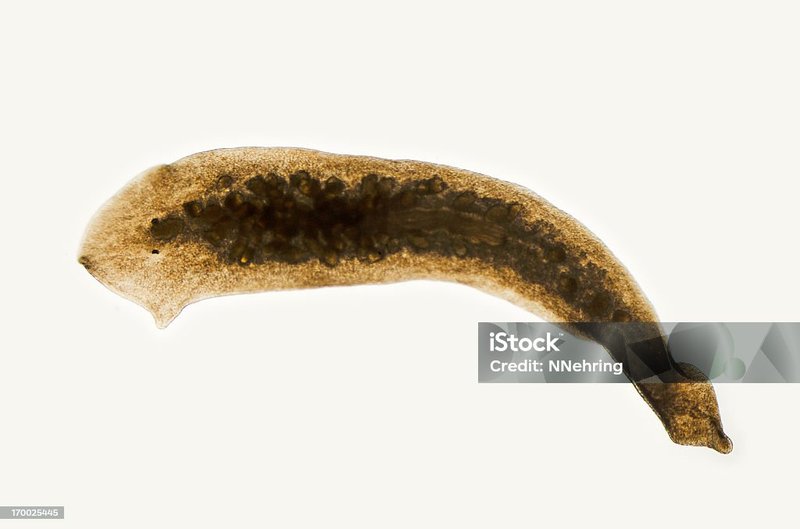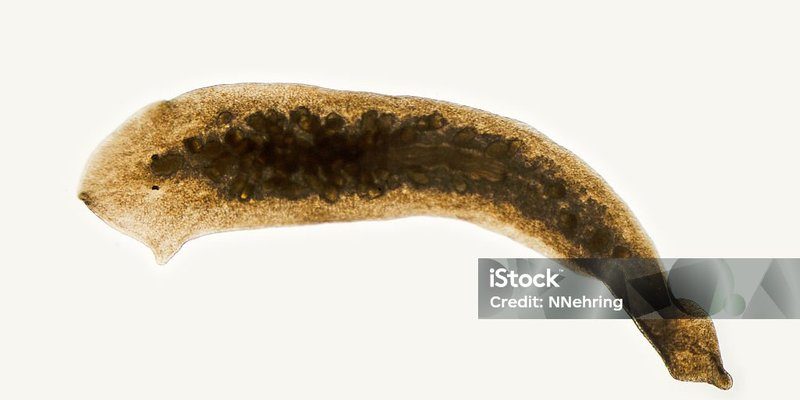
Let me explain: planaria are a type of flatworm found in freshwater habitats. They have this unique ability to regenerate, which makes them incredibly interesting to scientists and casual observers alike. However, the challenge lies in how similar they can look to other organisms. Just like spotting a certain type of bird versus another, learning the nuances of planaria identification can save you from mislabeling these cool creatures as something they’re not. Let’s dive deeper into the field identification challenges when spotting a planaria—you’re going to learn some neat stuff!
Understanding Planaria: What Are They?
Before we jump into identification challenges, it’s important to know what planaria actually are. These little flatworms belong to the class Turbellaria and are typically found in freshwater environments like ponds, ditches, and marshes. They can be recognized by their flat, elongated bodies, which can range from a few millimeters to several centimeters long.
What sets planaria apart is their remarkable regenerative abilities. If you were to cut one in half, you wouldn’t just end up with two halves—each part could regenerate into a whole new worm! This fascinating trait is a key reason why planaria are often studied in biology labs.
In terms of appearance, they generally have a soft, smooth body that can vary in color from brown to greenish or even transparent, making them blend in with their surroundings. This camouflage plays a big role in the identification challenges you might face in the field.
Similarities with Other Organisms
You might be wondering what makes planaria so hard to identify. Well, one of the main challenges comes down to their similarities with other species. For instance, planaria can resemble leeches or even tiny nudibranchs (marine slugs). These lookalikes often have similar shapes and colors, which can lead to some confusion.
– Leeches: While leeches are more cylindrical and often have a segmented appearance, they can be similar in size and color to planaria. If you spot something that’s moving in a squirmy, snake-like way, it’s probably a leech rather than a planaria.
– Nudibranchs: If you’re near saltwater, the vibrant colors of nudibranchs might catch your eye. These sea slugs can also be exceptionally eye-catching and can create confusion.
Being aware of these other organisms can really help you sharpen your identification skills. Always remember that physical characteristics and behavior can play a significant role in distinguishing these creatures.
Habitat Variability
Identifying planaria also becomes tricky due to the variety of habitats they occupy. Not all planaria live in the same type of water or environment. Some prefer stagnant ponds, while others thrive in fast-flowing streams. The variations in habitat can influence their appearance and behavior.
For instance, a planaria living in a murky pond might have a different coloration compared to one found in a clear stream. The clarity of the water can also affect how visible they are. In muddy or algae-filled waters, spotting a planaria can feel like finding a needle in a haystack.
Additionally, the types of vegetation present in these environments can either hide or reveal planaria. In areas with thick submerged plants, they may blend in so well that they become nearly invisible—adding another layer to the identification challenge.
Behavioral Traits to Observe
Another important aspect to consider when trying to identify planaria is their behavior. These little guys have an intriguing way of moving. They typically glide through the water by using mucus, which makes them look somewhat like they’re swimming smoothly, but they can also exhibit a wriggling motion.
When hunting, planaria can be quite active, often darting around and showing a remarkable level of agility. On the other hand, they can also be relatively inactive, resting on a surface. If you see a flat worm-like creature just hanging out, it might not be a planaria at all. Instead, it could be a different type of flatworm or even a leech.
So, keep an eye on movement patterns. If it looks like it’s exploring the area or hunting for food, it could be a planaria. But if it appears to be stuck in place, further investigation is warranted.
Identifying Key Physical Features
Now, let’s get into the nitty-gritty of identifying planaria by their physical features. The shape is often the first thing you’ll notice. Planaria have a distinct, flattened body that can be either pointed or rounded at the front. This is different from other types of flatworms that might have more bulbous bodies.
– Eyespots: One of the fascinating features of planaria is their eye spots. These are not true eyes, but rather light-sensitive cells that help them detect surroundings. If you look closely, you might see two small, dark spots at the anterior end.
– Coloring: As I mentioned earlier, their coloration varies. Brown or green hues are common, but some can be almost colorless. Observing the color pattern accurately can help in identification, especially in distinguishing them from similar-looking creatures.
– Body Texture: The texture of a planaria’s body is another telltale sign. They have a smooth and soft touch, unlike the rougher texture of some leeches.
By paying attention to these key features, you’ll improve your chances of spotting a planaria effectively.
Using Resources and Guides
A smart way to improve your planaria identification skills is to use field guides and resources. Many nature enthusiasts carry guides that showcase different freshwater organisms, including planaria. These often include photographs and detailed descriptions, making it easier to distinguish between various species.
Another great method is to join local nature groups or online communities. Here, you can share your findings and compare notes with other enthusiasts. People often share images and insights that can prove invaluable for identification.
There are also smartphone apps designed for nature identification. These can help you connect with experts who can provide feedback on your findings. If technology is your thing, this could be a game-changer!
Final Thoughts
Spotting planaria in the wild can be quite an adventure, but it’s not without its challenges. From their remarkable regenerative capabilities to their camouflage and similarities with other species, identifying them requires a keen eye and patience. As you practice and learn about their behaviors and habitats, you’ll become more confident in your ability to distinguish planaria from impostors.
So, next time you’re out by the water, take a moment to observe and appreciate the amazing world of planaria. Who knows? You might just find yourself fascinated by these tiny flatworms. Just remember to enjoy the process of discovery—it’s all part of the fun! Happy spotting!

